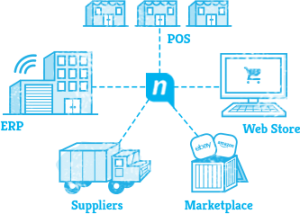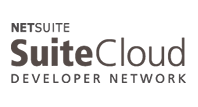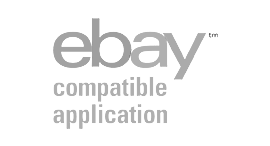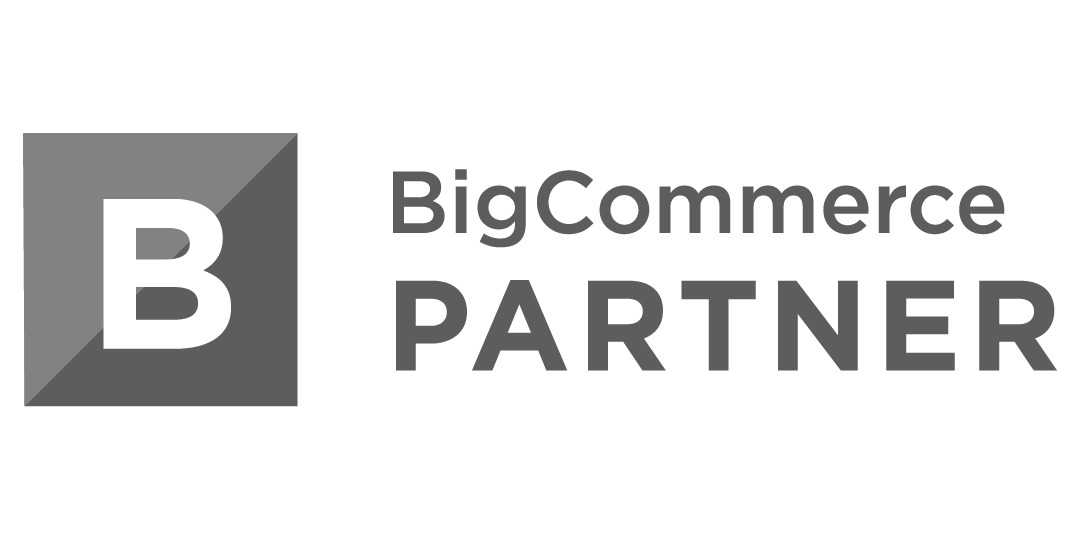One of the fundamental decisions we made, while building the nChannel platform, was to use a hub-spoke architecture. We did so, because the list of technology benefits was significant. And, we chose to pass those benefits on to our customers, in the form of business benefits. The bottom line: hub-spoke architecture is simply an optimal way to build complex technology platforms.
Let’s take a look at hub-spoke architecture and the key business benefits it can bring to your business:
- Reduces the liability of scaling your business.
- Increases your business’s ability to adapt.
- Creates a “big picture” window into your business’s successes and struggles.
- Maximizes the return on your technology investments.
Hub-Spoke vs. Point-to-Point
Briefly, let’s go over the difference between hub-spoke and point-to-point (the inverse) architectures. If you already know this, you can skip this section.
With a point-to-point architecture, systems talk directly to one another. That means the complexity and cost of creating a fully integrated platform increase exponentially as you add new systems. Two systems require one connection. Four require six. Eight require twenty-eight. While initially simpler, the costs significantly outweigh the benefits as your business grows.
A hub-spoke model is much simpler over the long term. You have a single hub system, which is responsible for facilitating all communication to and from the others. It does so by translating each system’s operations into a single canonical language. The hub-spoke architecture does require investment in that hub system, but it scales better. Four integrate systems require four connections (one of each to the hub); eight systems require eight, etc.
For a more in-depth explanation, check out this admittedly dated, but still quite relevant article about hub-spoke architecture.
Key Business Benefits
Hub-spoke architecture definitely looks better from a theoretical standpoint, but theory doesn’t make anyone money. So, let’s look at four tangible business benefits gained by adopting a hub-spoke architecture for your multichannel retail platform.
Reduces the Liability of Scale
As your business grows, so will your technology needs. This is especially true in retail where you’ll be left in the dust if you aren’t executing a multichannel selling strategy. You need to be in all the places your customers will be, and in 2014 that means a whole bunch of digital places. Don’t forget that all your inventory management, accounting, and back-end systems are digital as well. When you get bigger, so does your technology headache.
A hub-spoke architecture reduces the liabilities that come with growing your business, by maintaining a consistent architecture that scales. As you add more systems to the mix, each only requires a single connection–to the hub. As your volume of transactions increases, it puts limited stress on your overall system, because you aren’t trying to propagate those transactions through an exponential number of connections.
Hub-spoke architecture’s simplicity also reduces the financial costs involved with scale. Each new technology integration requires about the same amount of work (i.e. money). Since you’re always connecting to the same “hub”, the integration interface is consistent, as well. You may not realize how important this is until you’ve tried to do it the point-to-point way.
Increases Business Agility
Scaling your business isn’t just a technology investment challenge. The modern retail world changes quickly. You may be satisfied selling to your customers on your own store and Amazon. But, what if all the sudden you find your customers are moving to eBay? What if a new marketplace or selling channel comes up out of nowhere (Houzz just opened a new market for home goods)? You need to move fast, because if you don’t, you have plenty of competitors who will.
By standardizing the integration paradigm, hub-spoke architecture increases your ability to adapt your business. Adding new marketplaces and new sales channels become far simpler. They require less time, less investment, and less risk. This helps you move quickly.
Agility isn’t just important for customer-facing operations. As your business evolves, your back-office demands will too. Having the ability to add/change/remove internal systems as your business demands is hugely beneficial. Again, you can move quickly.
Enables “Big Picture” Insight
Imagine trying to build a big-picture look at your business, using data from disparate systems that are linked together one-to-one. When every system talks directly to every other system, data flows in a lot of different directions. Making use of that data would difficult at very best–more likely, impossible.
With a hub-spoke architecture all data flows through the same place: the hub. It’s aware of every transaction, every data entry, and every business activity that involved part of the system. And, since the hub already translated everything into a canonical language, all that data is compatible.
This means your hub isn’t just a facilitator of transactions; it’s your window into your business. The hub can give you a holistic picture of all of your operations, how they relate, and where the problems are. This is the fundamental concept for nChannel’s Business Intelligence application.
Maximizes Technology ROI
Reduced liability, increased agility, and “big picture” insight all combine for one more key business benefit: maximum return on investment. The hub-spoke architecture makes all of your technology investments better, because they can more effectively communicate with one another. Your technologies literally make each other more beneficial.
That means your investments help you sell more and sell simpler. That means what get for what you paid for increases.
We made a technical decision to go with a hub-spoke model. We did it, because it enables us to pass these business benefits onto our customers. Our multichannel retail platform is a great example of a hub-spoke integration model, but it’s not the only one. Consider how you can use this pattern to improve how your technology empowers your business.







[…] It’s the third and the best way of Oracle NetSuite Shopify integration. Here in this model, external vendors offer cloud-based solutions that sit between NetSuite and Shopify or Shopify plus platforms. Hence, you can access and avail services anywhere and anytime. These SaaS (Software as a Service) models are often called hub-spoke models. […]